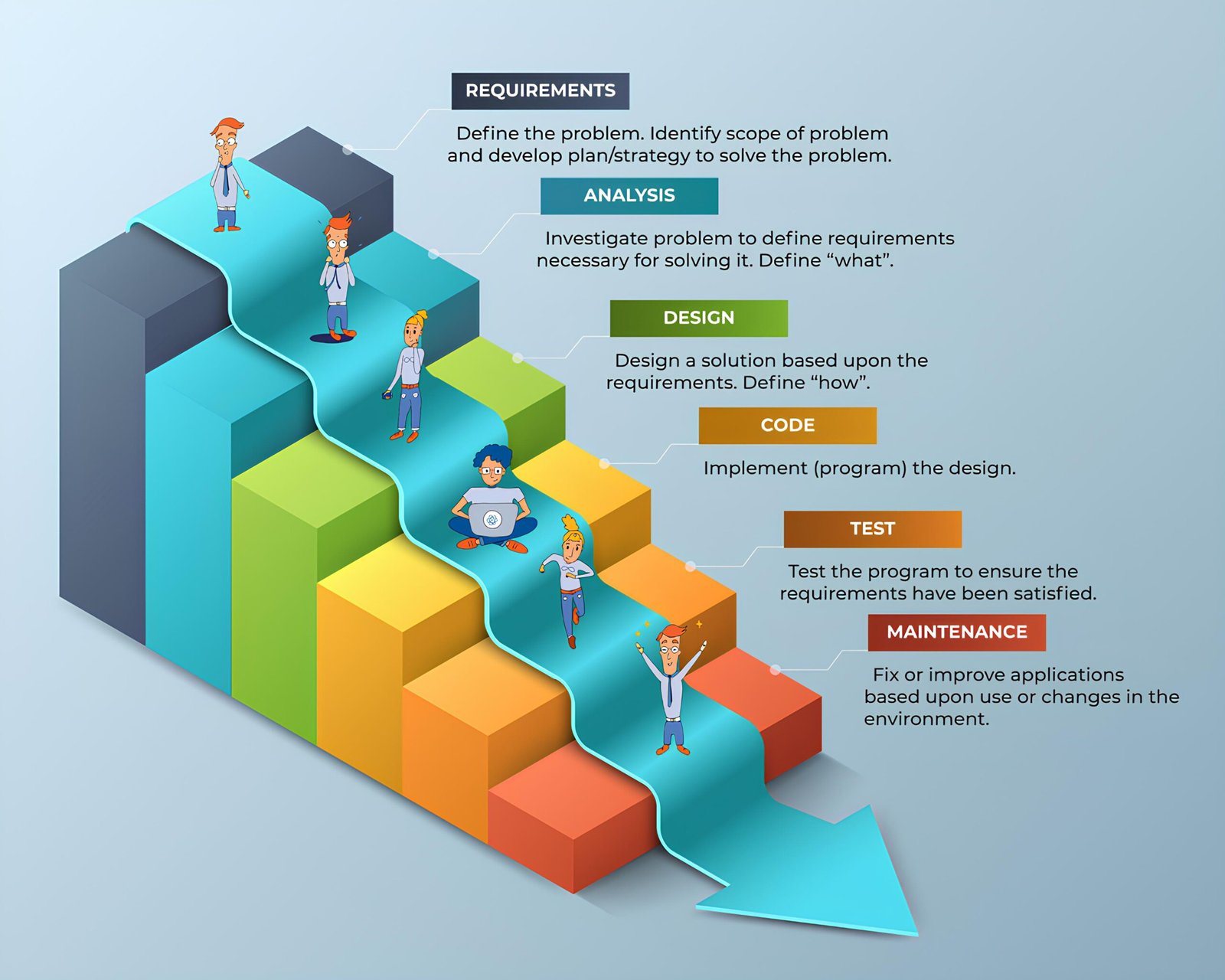Introduction to Cyber Attacks
In today’s interconnected world, where technology permeates every aspect of our lives, the specter of cyber attacks casts a long shadow. As our reliance on digital infrastructure grows, so too does the sophistication of malicious actors seeking to exploit vulnerabilities for their gain.
Cyber attacks pose a substantial threat not only to individuals but also to businesses and governments worldwide. It is imperative, therefore, to cultivate a comprehensive understanding of the diverse array of cyber attacks in order to fortify our defenses against these ever-evolving threats.
Cyber attacks come in myriad forms, each leveraging different techniques and vectors to breach security measures and compromise sensitive data. From relatively simple phishing schemes to complex ransomware attacks, the arsenal of cybercriminals is vast and continuously evolving.
By shedding light on the seventeen most commonly employed types of cyber attacks, this article endeavors to empower individuals and organizations with the knowledge needed to mitigate risks and safeguard digital assets. Understanding the nature of cyber attacks is the first step towards bolstering our defenses. By recognizing the tactics employed by cybercriminals, we can implement proactive measures to protect ourselves and our data.
Through vigilance, education, and robust cybersecurity protocols, we can navigate the digital landscape with confidence and resilience. Join us as we delve into the intricacies of cyber attacks and explore strategies for fortifying our defenses in an increasingly hostile online environment.
Understanding the Different Types of Cyber Attacks

Malware Attacks
Malware, a condensed form of malicious software, encompasses any software engineered to inflict harm or exploit computer systems. Malware attacks come in various forms, including viruses, worms, Trojans, and ransomware. These attacks can be initiated through infected emails, malicious downloads, or compromised websites.
Once infected, malware can steal sensitive data, disrupt system operations, or grant unauthorized access to attackers. To protect against malware attacks, it is essential to keep antivirus software up to date, avoid clicking on suspicious links, and regularly backup important data.
Phishing Attacks
Phishing attacks entail deceiving individuals into revealing sensitive information, such as passwords, credit card details, or social security numbers. Attackers often masquerade as legitimate organizations, sending deceptive emails or setting up fake websites to deceive unsuspecting victims.
These attacks rely on social engineering techniques to exploit human vulnerabilities. To avoid falling victim to phishing attacks, it is crucial to be cautious of unsolicited emails, double-check the legitimacy of websites, and never share sensitive information through unsecured channels.
Denial of Service (DoS) Attacks
Denial of Service (DoS) attacks aim to disrupt the normal functioning of a computer network or service. Attackers flood the targeted system with an overwhelming amount of traffic, rendering it unable to respond to legitimate users. These attacks can result in significant financial losses, reputational damage, and even temporary service outages.
To mitigate the impact of DoS attacks, organizations should implement robust network monitoring systems, utilize load balancers, and deploy firewall solutions to filter out malicious traffic.
Man-in-the-Middle (MitM) Attacks
Man-in-the-Middle (MitM) attacks involve intercepting and tampering with communication between two parties, unbeknownst to either side. Attackers position themselves between the sender and receiver, enabling them to eavesdrop, alter, or inject malicious content into the communication stream.
MitM attacks can occur in various scenarios, including public Wi-Fi networks and compromised routers. To protect against MitM attacks, it is essential to use secure, encrypted communication channels, avoid connecting to untrusted networks, and regularly update software and firmware.
SQL Injection Attacks
SQL injection attacks are aimed at web applications that interact with databases. Attackers exploit vulnerabilities in the application’s code to inject malicious SQL statements, allowing them to manipulate the database or gain unauthorized access.
SQL injection attacks can lead to data breaches, unauthorized data modification, or even complete system compromise. To prevent SQL injection attacks, developers must implement proper input validation and use parameterized queries when interacting with databases.
Cross-site Scripting (XSS) Attacks
Cross-site scripting (XSS) attacks occur when attackers inject malicious scripts into trusted websites, which are then executed by the victims’ browsers. Such scripts have the capability to pilfer sensitive information, hijack user sessions, or vandalize websites. XSS attacks can be prevented by implementing proper input validation, encoding user-generated content, and utilizing content security policies to restrict the execution of scripts from untrusted sources.
Ransomware Attacks
Ransomware attacks encrypt valuable data on a victim’s computer or network, rendering it inaccessible until a ransom is paid. Attackers often demand payment in cryptocurrency to avoid traceability. Ransomware attacks can have devastating consequences for individuals and businesses, causing financial losses and reputational damage.
To protect against ransomware attacks, it is crucial to regularly backup data, use strong and unique passwords, and educate users about the risks associated with opening suspicious email attachments or visiting compromised websites.
Password Attacks
Password attacks involve unauthorized attempts to gain access to user accounts by systematically guessing or stealing passwords. Attackers may employ various methods, including brute force attacks, dictionary attacks, or credential stuffing.
Weak passwords, password reuse, and lack of multi-factor authentication can make accounts vulnerable to password attacks. To enhance password security, individuals should use long, complex passwords, enable multi-factor authentication whenever possible, and avoid reusing passwords across different platforms.
Social Engineering Attacks
Social engineering attacks exploit human psychology to manipulate individuals into divulging sensitive information or performing actions that benefit the attacker. These attacks can take the form of phishing emails, impersonation, or pretexting.
Social engineering attacks rely on exploiting trust, fear, or authority. To protect against social engineering attacks, individuals should be vigilant, verify the identity of requesters, and be cautious of sharing sensitive information without proper verification.
Advanced Persistent Threats (APTs)
Advanced Persistent Threats (APTs) are sophisticated, targeted attacks that aim to gain unauthorized access to systems or networks for an extended period. APTs often involve a combination of various attack techniques, including spear-phishing, zero-day exploits, and backdoors.
APTs can remain undetected for months, allowing attackers to steal sensitive data or monitor activities. Protecting against APTs requires a multi-layered security approach, including network segmentation, regular security assessments, and continuous monitoring for suspicious activities.
Botnet Attacks
Botnet attacks involve a network of compromised computers, or bots, under the control of a central command and control server. Attackers use botnets to carry out various malicious activities, such as distributed denial of service (DDoS) attacks, spam distribution, or data theft.
Botnet attacks can cause significant disruptions and financial losses. To protect against botnet attacks, individuals and organizations should regularly update software, use strong passwords, and deploy intrusion detection and prevention systems.
Zero-day Attacks
Zero-day attacks capitalize on vulnerabilities in software or hardware that remain undisclosed to the vendor or developers. Attackers discover and exploit these vulnerabilities before patches or updates are released, giving defenders zero days to respond.
Zero-day attacks can have severe consequences, as they often bypass traditional security measures. To mitigate the risks of zero-day attacks, organizations should implement threat intelligence solutions, regularly update software and firmware, and apply patches as soon as they become available.
Distributed Denial of Service (DDoS) Attacks
Distributed Denial of Service (DDoS) attacks involve overwhelming a target system or network with a flood of traffic, rendering it unable to handle legitimate requests. Attackers often utilize multiple compromised devices, forming a botnet, to carry out DDoS attacks.
DDoS attacks can lead to service disruptions, financial losses, and reputational damage. To protect against DDoS attacks, organizations should implement DDoS mitigation solutions, use content delivery networks (CDNs), and regularly assess network capacity.
Eavesdropping Attacks
Eavesdropping attacks encompass intercepting and monitoring communication between two parties without their awareness. Attackers can gain access to sensitive information or credentials by eavesdropping on unencrypted or poorly secured communication channels.
Eavesdropping attacks are particularly prevalent in public Wi-Fi networks and unsecured wireless connections. To mitigate the risk of eavesdropping attacks, individuals should opt for encrypted communication channels, steer clear of unsecured Wi-Fi networks, and employ virtual private networks (VPNs) when handling sensitive information.
Insider Attacks
Insider attacks occur when individuals within an organization, such as employees or contractors, misuse their access privileges to gain unauthorized access or cause harm. Insider attacks can be intentional or unintentional, and they can result in data breaches, financial losses, or reputational damage.
To mitigate the risks of insider attacks, organizations should implement strict access controls, conduct background checks on employees, and regularly monitor user activities for signs of suspicious behavior.
Protecting Your Digital Assets from Cyber Attacks
Cybersecurity Best Practices
- Protecting our digital assets from cyber attacks requires a proactive approach and adherence to cybersecurity best practices. Some essential practices include:
- Regularly updating software and firmware to patch vulnerabilities.
- Using strong, unique passwords and enabling multi-factor authentication.
- Educating users about potential risks and the importance of cybersecurity.
- Deploying network segmentation to mitigate the impact of potential breaches.
- Conducting regular security assessments and penetration testing.
- Backing up data regularly and storing backups offline or in secure cloud storage.
- Deploying robust antivirus and anti-malware solutions.
- Monitoring network traffic and utilizing intrusion detection and prevention systems.
- Implementing secure coding practices when developing applications or websites.
- Limiting user privileges and adhering to least privilege principles.
By following these best practices, individuals and organizations can significantly enhance their cybersecurity posture and protect their digital assets from potential cyber attacks.
Conclusion
In an era characterized by pervasive digital connectivity, the specter of cyber attacks looms large, presenting a formidable challenge to individuals, businesses, and governments alike. The imperative to understand and confront this threat has never been more pressing.
By comprehensively examining the seventeen most prevalent types of cyber attacks, ranging from insidious malware incursions to the peril of insider threats, this article has provided invaluable insights into the multifaceted nature of cyber warfare.
Armed with this knowledge, it is incumbent upon us to take proactive measures to fortify our defenses and safeguard our digital assets. The stakes are high, with the potential consequences of a successful cyber attack ranging from financial ruin to critical infrastructure disruption.
However, by remaining vigilant, staying informed about emerging threats, and diligently implementing best practices in cybersecurity, we can mitigate risks and enhance our resilience in the face of adversity.
As we navigate the ever-evolving landscape of cyber threats, collaboration and collective action are paramount. By fostering a culture of cybersecurity awareness and collaboration, we can leverage our collective expertise to stay one step ahead of cybercriminals and protect the integrity of our digital ecosystem.
Together, let us embark on this crucial journey towards a safer, more secure digital future. In conclusion, while the threat of cyber attacks may be omnipresent, so too are the opportunities for proactive defense and resilience-building. By arming ourselves with knowledge, vigilance, and a commitment to best practices, we can turn the tide against cyber threats and safeguard the integrity of our digital world for generations to come.
Subscribe to our newsletter to receive future updates on Technology, Artificial Intelligence (AI), and Tech Trends. Explore our categories to find more relevant stuff. Stay informed and motivated with our most recent insights!
17 Types Of Cyber Attacks Commonly Used By Hackers
Maaz Khalid
March 27, 2024



